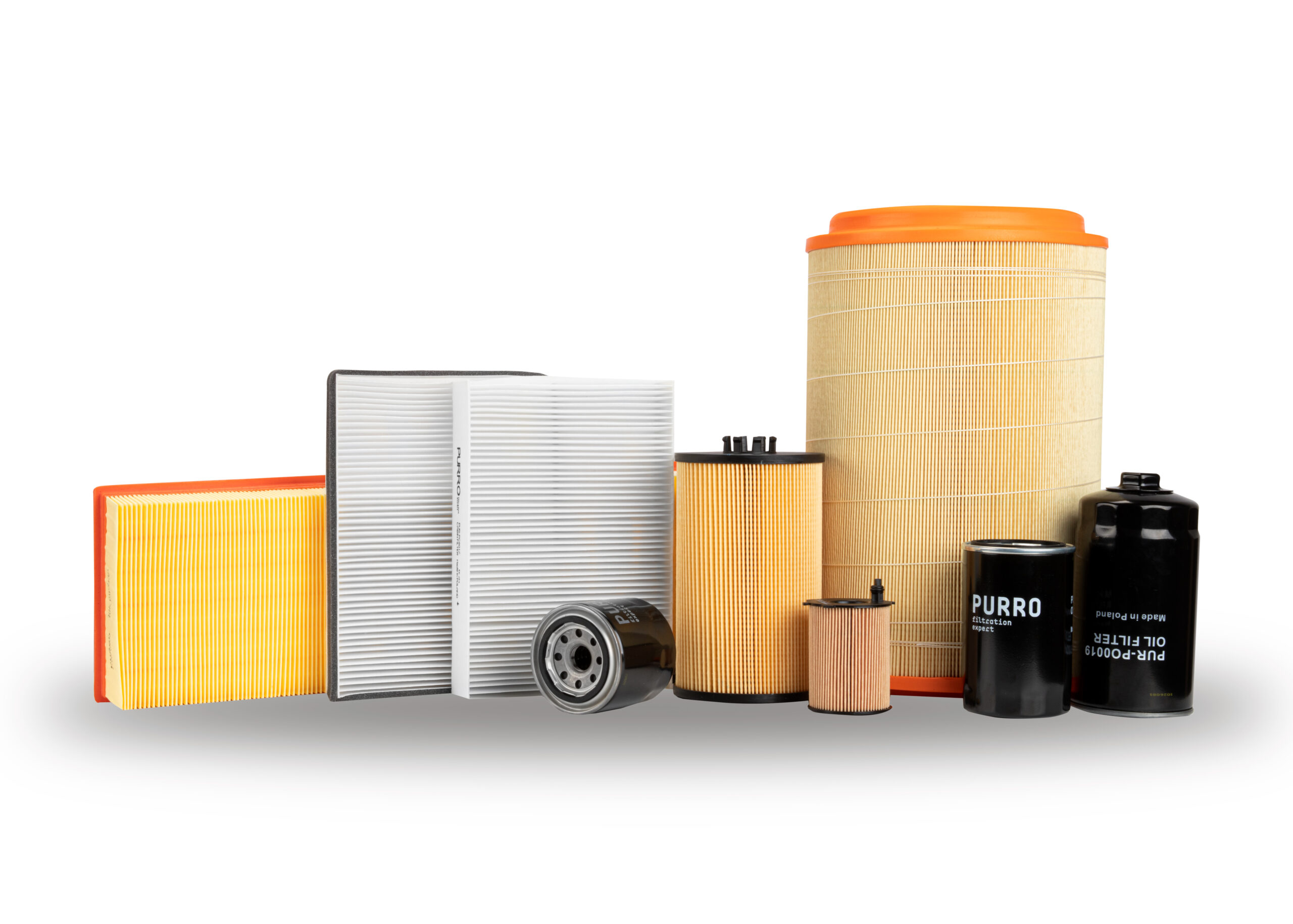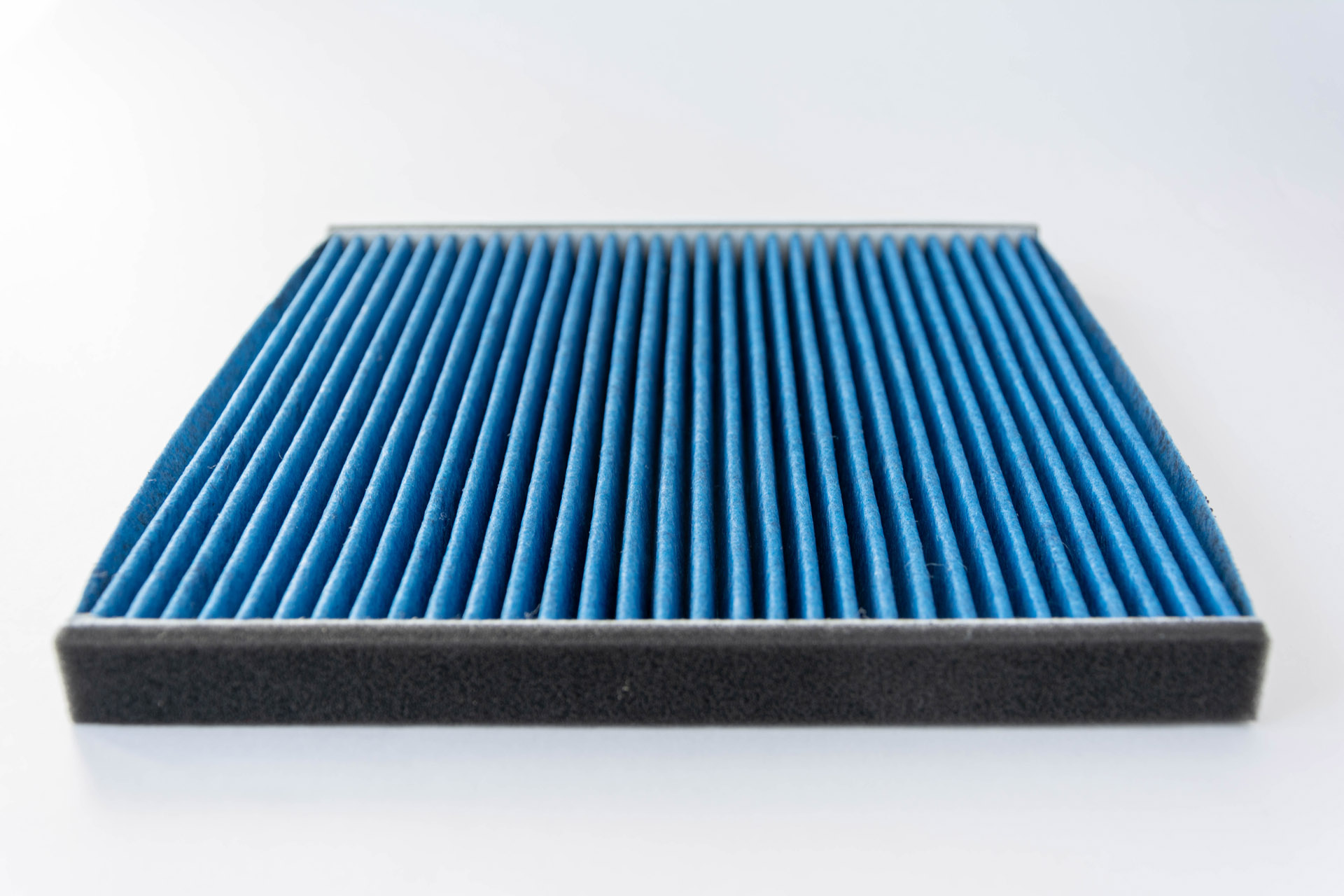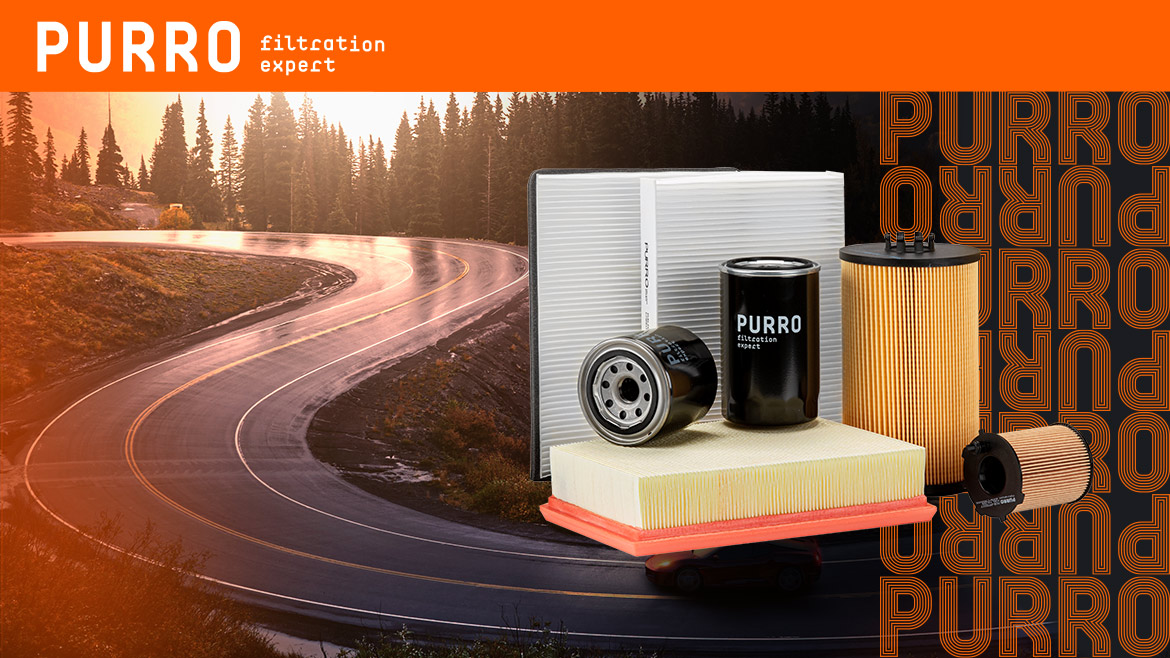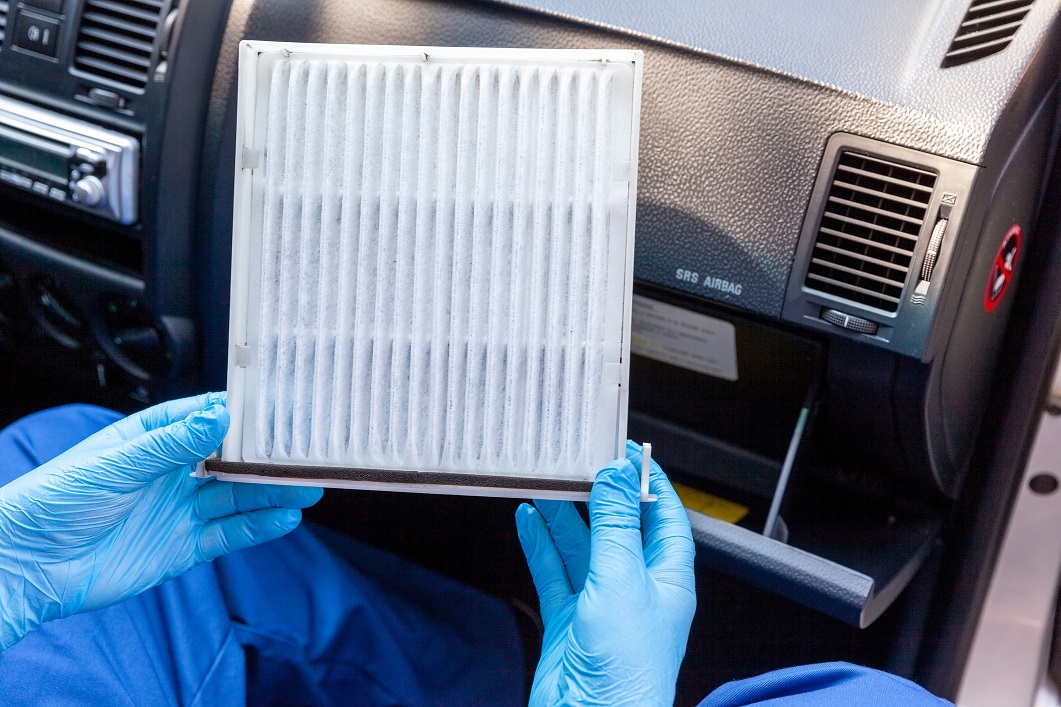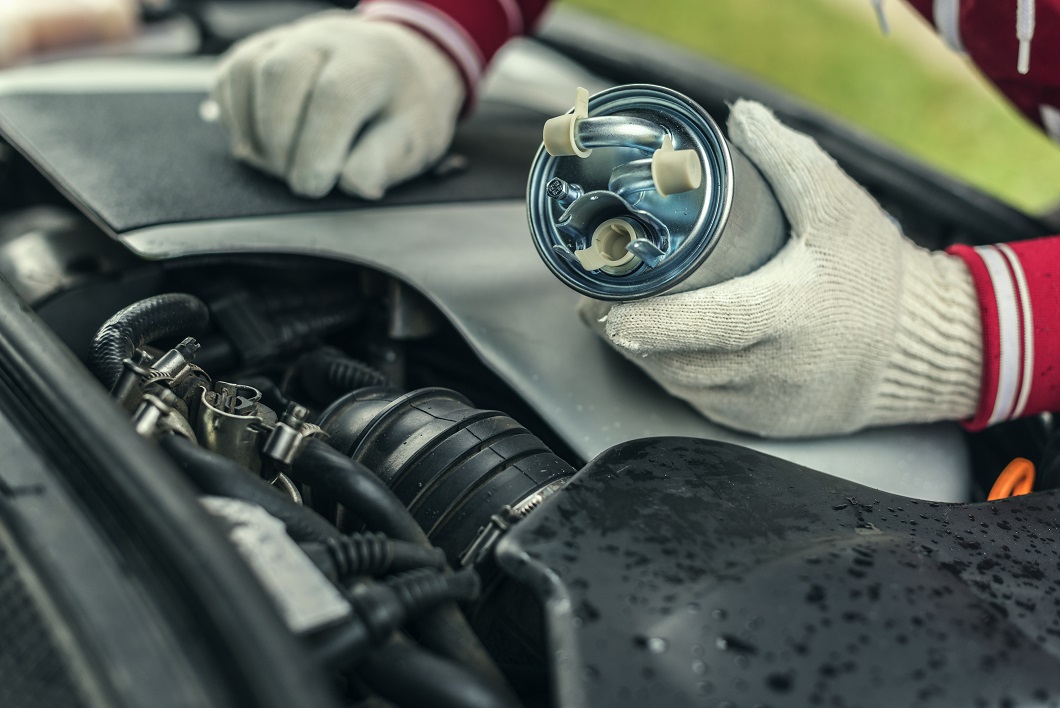PURRO recommends: Oil filters – how are they constructed and when should we change them?

It is hard to imagine modern combustion engines without an oil filter. The lubrication system is the basis of engine operation, providing proper operating conditions. Despite the engine oil works in a closed circuit, purifying it is a must. Specialists from PURRO explain the construction of an oil filter and the specificity of its operation.
Construction of an oil filter
Though in some makes of car (e.g., BMW) one replaces only an oil filter cartridge, most of the filters have similar construction. It is a small metal box with a seal, turned onto a threaded stub pipe. Inside the box, we can find a corrugated filter paper or filter fibre. It is winded over a metal core, which makes the filter more stable and prevents accidental tearing of the filtering material. To be sure, that the filter plays its role properly, it is worth reaching only for proven top-quality products. PURRO fits this assumption perfectly.
An important element of an oil filter is a return valve. It prevents the oil from dripping back to the oil sump and ensures constant and proper content of oil in the filter. Thanks to such a solution, the oil duct is immediately filled with lubricant. This allows avoiding the so-called dry start, which in unfavourable conditions might lead to breaking the oil film in the engine. It is worth remembering that the metal elements of an engine do not rub one another, but they are sliding on a thin engine oil film when the engine is working. If one removes the film, the result is a violent increase in temperature of the elements of the engine and its seizure.
Safety valve in an oil filter
An important part of an oil filter is a safety valve, also called an overpressure valve. It is activated, when the engine oil pressure grows much and allows not filtered oil to flow to the oil duct. Why is it so important? If it was not for the safety valve, when the filter is clogged up, there might be a sudden increase of engine oil pressure in the engine and damage of other engine elements, e.g.: the engine breather or oil pump. Additionally, the engine would totally lose lubrication, and that would result in seizure of pistons, rocker arms and bearing pans.
The valve is also useful in winter when the driver is using an improper engine oil, with too high viscosity. Frozen and thick engine oil flows through the filtration cartridge slowly and generates extremely high pressure. In some cases, the result might be damage of the filter and small pieces of filtration material getting to the engine lubrication system. Letting through not filtered oil generates a much smaller risk, though it is not recommended. Because of this reason, it is worth paying a lot of attention to choosing a proper engine oil for winter time and avoiding those cheapest ones, on a mineral oil base. It is especially important if the car is used mainly on short distances, making it impossible for the engine oil to warm up to a proper level. And one must remember that engine oil heats up much longer than the coolant.
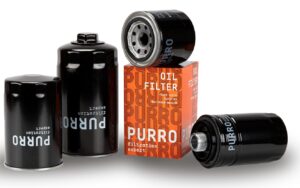
How does an oil filter work?
The first stage of filtration starts when the oil is taken from the oil sump by the so-called oil strainer. A sieve located in the strainer stops the biggest fractions of impurities, e.g., large metal particles or coal deposits. After the oil is taken by the oil pump, it is pressed into the oil filter. Oil gets to the box with small holes, located next to the thread. It gets onto the filtering material. The special arrangement of the filtering material inside the filter helps to increase the surface of the filtering material.
Cleaned of small particles, with sizes bigger than approx. 20 micrometres (µm), the oil gets to the stiffened core of the oil filter, and next, through a one-way return valve it flows to the oil duct of the engine. Thanks to numerous oil channels it gets to moving parts of the engine, providing proper lubrication. Next, it flows down to the oil sump, where it is again taken by the oil strainer to the oil pump. For the whole time the safety valve is closed, and it is being open only when the pressure of the oil increases. Then, the oil flows between the metal coating and the filtering material, and next with a pressure valve, located at the bottom of the filter, it is pressed into the core.
How often should one replace the oil filter?
The main task of engine oil is a reduction of friction between moving elements of an engine. Though it is known mainly because of its lubricating features, it has multiple other functions. Engine oil also plays the role of a coolant for an engine, taking the heat away from metal parts. Because of this, it is really important to keep a fixed, high level of engine oil in an engine, so that the heat capacity of lubricant remains on a high, unchanged level.
Equally important role of the engine oil is cleaning and protecting the engine. Fresh engine oil contains cleaning additives, which remove deposits, dirt and coal from the engine when it works. Next, all those impurities are transported to the oil sump of the engine. The task of an oil filter is to clean the oil from all the dirt, to provide the possibility of further proper operation. The better the filter, the more efficiently it influences the operation of the engine. That is why it is worth choosing top-quality products, like PURRO, which meet the strictest quality norms, imposed by manufacturers of vehicles. Even good quality oil can quickly become dark in colour. This is a sign, that the oil works properly and dissolves dirt in the engine, not that it is used up.
How often should one replace the oil filter? It is to be done with every oil change, i.e., every 10 to 15 thousand kilometres. Some manufacturers recommend oil change intervals which are about 30 thousand kilometres and using long-life engine oils, but in many cases, it can cause much faster wear of the engine. A vehicle, working in difficult conditions, e.g., in a mountainous area, pulling a trailer or being used only on short distances, uses the engine oil up much faster.
Additionally, in leaking engines, moisture or petrol can get to the oil, causing faster ageing. Even light and seemingly fresh engine oil can lose its anti-corrosion properties and additives. Chemical vapour and exhaust gases are also harmful to the engine, and they cannot be removed by the oil filter.
How to change an oil filter?
Though one can sometimes find instructions on how to clean an oil filter, economically it is absolutely unjustified. New oil filters usually cost between PLN 10 to PLN 30 (EUR 3-8). So, for the favour of your vehicles, it is worth investing a such small amount of money, taking into consideration the fact that, even if you clean a filter as perfectly as possible, it will not be operating as efficiently as a new product. Looking at how important role an oil filter plays, it is really not worth saving on it. And we do not mean only the replacement of the filter, but also choosing a quality product. It is worth using tested solutions from the best manufacturers, among which PURRO is surely the one you can bet on.
Each oil change should go together with the oil filter change. As this is a key element for the operation of an engine, it is worth delegating the filter change to a professional mechanic in a car garage, who has proper knowledge and tools and will surely perform the change in line with proper mechanical procedures. Of course, having proper tools and basic mechanical knowledge, one can decide to perform the change on one’s own. How to do it in that case?
Finding the filter is not difficult in most cars. It is a small size box, usually located in the bottom part of the engine, close to the oil sump. But, though finding a filter may not be difficult, unscrewing it might cause some problems. To unscrew the filter, it is not only to deal with a seized thread of the filter, but also the seal which prevents leaks of oil. Usually, it is not possible to unscrew the filter with one’s hand, that is why it is worth buying a special wrench for unscrewing the filter. It is a small lever with a rubber belt or a chain, which is put around the filter. Though the procedure itself does not require any special skills to be performed efficiently, one needs special tools, and that is why we recommend delegating the task to a mechanical service.
In vehicles with a filter cartridge, access to the oil filter is from the side of the engine compartment. The cartridge is located in a sealed, not replaceable housing, protected with a nut. One needs to remove the nut and take out the old filter cartridge. When replacing the filter, it is required also to change all rubber seals – of a nut and a valve. After assembling new seals and new filter cartridges, one can put the whole on the engine.
When changing an oil filter at home, there is also a problem with what to do with the old filter and engine oil, which cannot be disposed with communal waste. It has to be delivered to a selective waste collection point or a special company, dealing with dangerous waste disposal. For a driver, it can be an additional problem, which will never appear if a garage performs the oil change. In this case, it is a garage that is responsible for proper waste management.

